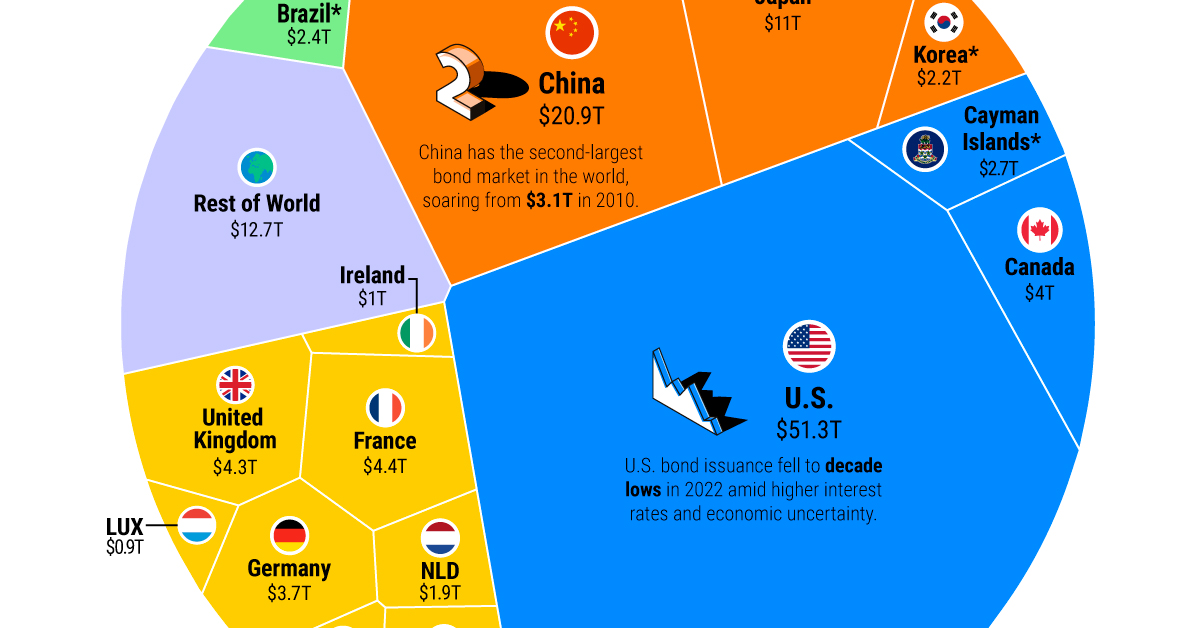

Finance
What Is Foreign Portfolio Investment?
Published: October 18, 2023
Learn about finance and discover what foreign portfolio investment is. Find out how it can diversify your investment portfolio and enhance your financial growth.
(Many of the links in this article redirect to a specific reviewed product. Your purchase of these products through affiliate links helps to generate commission for LiveWell, at no extra cost. Learn more)
Table of Contents
- Introduction
- Definition of Foreign Portfolio Investment
- Characteristics of Foreign Portfolio Investment
- Types of Foreign Portfolio Investment
- Benefits of Foreign Portfolio Investment
- Risks of Foreign Portfolio Investment
- Factors Influencing Foreign Portfolio Investment
- Regulation and Oversight of Foreign Portfolio Investment
- Examples of Foreign Portfolio Investment
- Conclusion
Introduction
Welcome to the world of foreign portfolio investment, a crucial component of the global financial system. In today’s interconnected economy, investors have a wide range of opportunities to diversify their portfolios and maximize their returns. Foreign portfolio investment, also known as FPI, offers individuals and institutions the chance to invest in financial assets located in other countries. This can include stocks, bonds, money market instruments, and other securities.
Foreign portfolio investment plays a vital role in promoting cross-border capital flows and facilitating global economic growth. It allows investors to access new markets, gain exposure to different currencies, and capitalize on opportunities in emerging economies. At the same time, countries benefit from foreign investment by attracting capital, encouraging market development, and stimulating economic activity.
In this article, we will delve into the definition, characteristics, types, benefits, risks, factors influencing, and regulation of foreign portfolio investment. We will also provide examples to illustrate how FPI operates in the real world.
So, whether you are an investor looking to expand your portfolio or simply interested in understanding the dynamics of global finance, read on to discover more about foreign portfolio investment.
Definition of Foreign Portfolio Investment
Foreign portfolio investment refers to the investment of funds in financial assets located in a foreign country. It involves the purchase of securities such as stocks, bonds, and money market instruments issued by companies, governments, or other entities in another country. Unlike foreign direct investment (FDI), where investors have a significant stake in the ownership and management of the foreign entity, foreign portfolio investment is typically characterized by a passive ownership interest.
Investors who engage in foreign portfolio investment are primarily seeking capital appreciation or income generation through the appreciation of the value of the securities or the receipt of dividends or interest payments. The investment can be made by individuals, institutional investors such as pension funds and mutual funds, or even governments.
Foreign portfolio investment allows investors to diversify their investment portfolios geographically, reducing the risks associated with any one particular market or country. It provides access to a wider range of investment opportunities, enabling investors to capitalize on the potential for higher returns in foreign markets.
Foreign portfolio investment can be classified into two categories: equity-based investments and debt-based investments. Equity-based investments involve buying shares or stocks of companies listed on foreign stock exchanges. Debt-based investments, on the other hand, involve purchasing bonds or other fixed-income securities issued by foreign governments or corporations.
In our next section, we will explore the characteristics of foreign portfolio investment, shedding light on its unique features and benefits.
Characteristics of Foreign Portfolio Investment
Foreign portfolio investment possesses several distinct characteristics that set it apart from other forms of investment. Understanding these characteristics is essential for investors looking to engage in foreign portfolio investment and make informed decisions.
- Passive Ownership: Unlike foreign direct investment, where investors have an active role in the management and control of the invested entity, foreign portfolio investment is characterized by passive ownership. Investors do not have a say in the day-to-day operations of the company or government whose securities they hold. Instead, they rely on the performance of the investment to generate returns.
- Short to Medium-term Investment Horizon: Foreign portfolio investment typically has a shorter investment horizon compared to long-term investments. Investors may enter and exit positions more frequently, seeking to take advantage of short-term price fluctuations or market trends. This flexibility allows for liquidity and the ability to swiftly adjust portfolios in response to changing market conditions.
- Market Volatility: Due to the nature of financial markets, foreign portfolio investment is subject to market volatility. Factors such as economic conditions, geopolitical events, and investor sentiment can cause significant fluctuations in the value of the invested securities. This volatility can present both opportunities and risks for investors.
- Risk and Return Trade-off: Like any investment, foreign portfolio investment involves a trade-off between risk and return. Higher-risk investments may offer the potential for higher returns, but they also come with a greater likelihood of losses. Finding the right balance between risk and return is essential for investors when constructing a well-diversified portfolio.
- Currency Risk: When investing in foreign markets, investors are exposed to currency risk. Fluctuations in exchange rates can impact the value of the investment, either positively or negatively. Investors need to be aware of the potential impact of currency movements and consider hedging strategies to manage this risk.
- Information Asymmetry: Investors engaging in foreign portfolio investment may face challenges due to information asymmetry. Access to accurate and timely information about foreign companies or governments can be limited, making it harder to make informed investment decisions. Conducting thorough research and seeking expert advice can help mitigate this challenge.
- Regulatory and Legal Framework: Foreign portfolio investment operates within the framework of regulations and laws implemented by both the home and host countries. Investors need to be aware of the legal requirements, tax implications, and restrictions imposed on foreign investments. Compliance with these regulations is crucial for a successful and legally compliant investment strategy.
Understanding these characteristics is key to navigating the complexities of foreign portfolio investment. In the following sections, we will explore the different types of foreign portfolio investment, along with their benefits and risks.
Types of Foreign Portfolio Investment
Foreign portfolio investment encompasses various types of investments that investors can make in foreign financial markets. These investments can be classified into two broad categories: equity-based investments and debt-based investments.
1. Equity-Based Investments:
Equity-based foreign portfolio investments involve the purchase of shares or stocks of companies listed on foreign stock exchanges. This type of investment provides investors with partial ownership of the company and allows them to benefit from the company’s growth and profitability.
Equity-based investments can be further categorized into two types:
- Direct Stock Purchases: Investors can directly buy shares of individual companies listed on foreign stock exchanges. This allows them to have a specific stake in the company’s ownership and participate in its dividend distributions and potential capital appreciation.
- Indirect Investments: Investors can also gain exposure to foreign equities through mutual funds, exchange-traded funds (ETFs), or other investment vehicles. These funds pool money from multiple investors and invest in a diversified portfolio of foreign stocks, providing investors with a convenient way to gain exposure to a broad range of companies and markets.
2. Debt-Based Investments:
Debt-based foreign portfolio investments involve the purchase of bonds or other fixed-income securities issued by foreign governments or corporations. These investments provide investors with regular interest payments and the return of the principal amount at maturity.
Debt-based investments can be further categorized into two types:
- Sovereign Bonds: Sovereign bonds are issued by foreign governments to raise capital. These bonds are backed by the full faith and credit of the government and are considered relatively low-risk investments. Investors earn interest on the bonds, which are paid periodically, and receive the principal amount at maturity.
- Corporate Bonds: Corporate bonds are issued by foreign corporations to finance their operations or expansion. These bonds offer investors regular interest payments and the return of the principal amount at maturity. The risk associated with corporate bonds varies depending on the creditworthiness of the issuing company.
Both equity-based and debt-based investments in foreign markets offer investors the opportunity to diversify their portfolios and potentially benefit from the growth and performance of international economies.
In the next section, we will explore the benefits of foreign portfolio investment, highlighting the advantages it offers to investors and economies.
Benefits of Foreign Portfolio Investment
Foreign portfolio investment offers several benefits to investors, as well as to the economies of both the home and host countries. Let’s explore the advantages of engaging in foreign portfolio investment:
- Diversification: One of the key benefits of foreign portfolio investment is diversification. By investing in assets across different countries, investors can reduce the risks associated with having all their investments concentrated in a single market. Diversification allows investors to spread their risk and potentially minimize losses during market downturns.
- Access to Global Markets: Engaging in foreign portfolio investment provides investors with the opportunity to gain exposure to global markets. This allows them to access a wider range of investment opportunities, including industries, companies, and sectors that may not be available domestically. It also enables investors to benefit from the growth potential of emerging economies.
- Potential for Higher Returns: Investing in foreign markets can offer the potential for higher returns compared to domestic investments. Different countries may experience varying levels of economic growth, market conditions, and industry trends, providing opportunities for investors to capitalize on these factors and potentially achieve greater investment returns.
- Currency Diversification: Foreign portfolio investment allows investors to diversify their currency exposure. By investing in different currencies, investors can potentially benefit from currency fluctuations, as exchange rate movements can impact the value of their investments. This diversification can act as a hedge against currency risks and provide opportunities for currency gains.
- Technology and Knowledge Transfer: Foreign portfolio investment can lead to technology and knowledge transfer between countries. When investors invest in foreign companies, they bring not only financial capital but also expertise, best practices, and technological advancements. This transfer of knowledge can contribute to the development of industries and enhance economic growth in the host country.
- Infrastructural Development: Foreign portfolio investment plays a significant role in the development of infrastructures in host countries. The inflow of foreign capital can support the construction of essential infrastructure projects, such as transportation systems, power plants, and communication networks. This, in turn, contributes to economic development and increases employment opportunities.
- Boost to Financial Markets: Foreign portfolio investment enhances the liquidity and depth of financial markets in host countries. Increased investor participation can lead to higher trading volumes, increased market efficiency, and improved liquidity. This creates a more vibrant and robust financial system, which benefits both local investors and the overall economy.
By leveraging the benefits of foreign portfolio investment, investors can diversify their portfolios, access global markets, and potentially achieve higher returns. At the same time, host countries benefit from increased capital inflows, technology transfer, and infrastructure development, creating a win-win situation for both investors and economies.
As with any investment, foreign portfolio investment also carries certain risks, which we will explore in the next section.
Risks of Foreign Portfolio Investment
While foreign portfolio investment offers several benefits, it is important for investors to be aware of the potential risks involved. Understanding these risks can help investors make informed decisions and develop strategies to mitigate them. Let’s explore some of the key risks associated with foreign portfolio investment:
- Market Volatility: Investing in foreign markets exposes investors to market volatility. Economic, political, or social events can cause significant fluctuations in the value of foreign securities. Investors need to be prepared for potential market downturns and fluctuations in order to avoid substantial losses.
- Exchange Rate Risk: Currency exchange rate fluctuations can impact the returns of foreign portfolio investments. If the value of the local currency depreciates against the investor’s home currency, it can lead to a decrease in the value of the investment. Investors need to closely monitor exchange rate movements and consider hedging strategies to manage this risk.
- Country-Specific Risks: Each country has its own set of risks that can impact foreign portfolio investments. These risks may include political instability, regulatory changes, legal uncertainties, and economic downturns. Investors need to conduct thorough research and analysis to assess the risk landscape of the countries they are investing in.
- Information Asymmetry: Access to accurate and timely information about foreign companies and markets can be a challenge for investors. Differences in accounting standards, language barriers, and the availability of reliable data can create information asymmetry. Investors need to actively seek out information, conduct thorough due diligence, and work with trusted advisors to mitigate this risk.
- Liquidity Risk: Some foreign markets may have limited liquidity compared to larger and more developed markets. This can make it more difficult for investors to buy or sell securities at their desired prices. Investors need to assess the liquidity of the markets they are investing in and consider the potential challenges they may face when entering or exiting positions.
- Regulatory and Legal Risks: Investing in foreign markets involves navigating different regulatory frameworks and legal systems. Changes in regulations or unforeseen legal challenges can impact the value of investments or restrict the ability to repatriate funds. Investors need to understand the regulatory environment of the countries they are investing in and ensure compliance with all applicable laws.
- Geopolitical Risks: Geopolitical events, such as conflicts, trade disputes, or economic sanctions, can have a significant impact on foreign portfolio investments. These events can disrupt markets, affect investor sentiment, and create uncertainties. Investors need to stay informed about geopolitical developments and their potential implications for their investments.
It is important for investors to carefully assess these risks and incorporate risk management strategies into their investment approach. Diversification, thorough research, and staying informed about global events can help investors navigate the risks associated with foreign portfolio investment.
In the next section, we will explore the factors that influence foreign portfolio investment and shape investment decisions.
Factors Influencing Foreign Portfolio Investment
Foreign portfolio investment is influenced by a multitude of factors that shape investment decisions and drive capital flows across borders. Understanding these factors is crucial for investors and policymakers alike. Let’s explore some of the key factors that influence foreign portfolio investment:
- Economic Indicators: Economic indicators such as GDP growth rate, inflation rate, interest rates, and employment data play a significant role in attracting foreign portfolio investment. Countries with strong economic fundamentals and stable macroeconomic conditions tend to be more attractive to investors, as they offer higher potential returns and lower risk.
- Market Size and Potential: The size and growth potential of a market are important considerations for foreign portfolio investment. Larger markets with a sizeable consumer base and growing middle class tend to attract more investment. In addition, countries with emerging markets and untapped potential can offer unique investment opportunities for investors seeking high-growth markets.
- Political Stability: Political stability and the rule of law are crucial factors in attracting foreign portfolio investment. Investors are generally more inclined to invest in countries that have a stable political environment, well-established legal frameworks, and protection of property rights. Political instability, corruption, and legal uncertainties can deter investors and lead to capital flight.
- Regulatory Environment: The regulatory framework and investor protection measures implemented by a country influence foreign portfolio investment. Investor-friendly regulations, transparent governance structures, and strong regulatory bodies improve investor confidence. Simplicity and ease of doing business, efficient capital markets, and low administrative barriers attract foreign investment.
- Corporate Governance: The strength of corporate governance practices is an important consideration for investors. Countries that prioritize transparency, accountability, and shareholder rights are more likely to attract foreign portfolio investment. Investors seek companies with strong corporate governance practices to reduce the risk of fraud, mismanagement, and unethical behavior.
- Exchange Rates: Exchange rates play a crucial role in foreign portfolio investment. Investors are affected by the relative strength or weakness of the local currency against their home currency. A favorable exchange rate can enhance investment returns, while an unfavorable exchange rate can erode returns. Exchange rate stability and the availability of hedging tools impact investment decisions.
- Market Liquidity: Market liquidity is an important factor for foreign portfolio investment. Liquid markets with a high trading volume and a wide range of investment options attract investors. Investors prefer markets where they can easily buy and sell securities without significant price impact. Adequate liquidity ensures efficient market functioning and reduces transaction costs for investors.
- Market Access and Restrictions: The level of openness and accessibility of a market to foreign investors influences portfolio investment. Countries with fewer restrictions on foreign ownership, fewer capital flow barriers, and easier repatriation of funds are more attractive to investors. Ease of market entry and exit, residency requirements, and taxation policies impact investment decisions.
These factors interact and vary across different countries and regions, shaping the flow of foreign portfolio investment. Investors carefully assess these factors when making investment decisions, weighing the potential returns against the associated risks.
In the next section, we will explore the regulation and oversight of foreign portfolio investment, highlighting the role of regulatory bodies and international agreements.
Regulation and Oversight of Foreign Portfolio Investment
Foreign portfolio investment is subject to regulation and oversight by both domestic and international entities. Governments and regulatory bodies play a crucial role in ensuring a transparent and fair investment environment while safeguarding the interests of investors and the overall stability of the financial system. Let’s explore the regulation and oversight of foreign portfolio investment:
Domestic Regulation: Each country has its own set of regulations governing foreign portfolio investment. These regulations vary in their scope, requirements, and restrictions. Governments implement measures to protect investors, ensure market integrity, and promote fair competition. These regulations may cover areas such as investor registration, disclosure requirements, restrictions on investor and ownership rights, and taxation.
Regulatory Bodies: Regulatory bodies oversee and enforce the regulations governing foreign portfolio investment. These bodies are responsible for granting licenses, registering investors, monitoring compliance, and taking necessary actions to maintain market integrity. Examples of regulatory bodies include the Securities and Exchange Commission (SEC) in the United States, the Financial Conduct Authority (FCA) in the United Kingdom, and the Securities and Exchange Board of India (SEBI) in India.
International Agreements and Treaties: Governments often enter into international agreements and treaties that govern foreign portfolio investment. These agreements aim to promote investment flows, ensure fair treatment of investors, and provide mechanisms for dispute resolution. Examples include bilateral investment treaties (BITs), free trade agreements (FTAs), and regional agreements such as the European Union (EU) directives.
Disclosure and Reporting: Transparency and information disclosure are important aspects of the regulation of foreign portfolio investment. Companies listed on stock exchanges are required to adhere to reporting standards and disclose relevant financial and non-financial information to the public. Investors must also disclose their holdings and transactions in foreign securities to regulatory bodies to ensure transparency and prevent market manipulation.
Risk Management and Investor Protection: Governments and regulatory bodies implement measures to mitigate risks and protect the interests of investors. This includes setting minimum capital requirements for market participants, conducting regular inspections and audits, and enforcing regulations against fraudulent activities. Investors are also encouraged to conduct due diligence, seek professional advice, and stay informed about the risks associated with foreign portfolio investment.
Capital Controls and Restrictions: Some countries impose capital controls and restrictions on foreign portfolio investment. These measures aim to regulate the flow of capital, manage currency fluctuations, and maintain financial stability. Examples of capital controls include limitations on repatriation of funds, restrictions on foreign ownership, and approval requirements for large investments.
Overall, the regulation and oversight of foreign portfolio investment aim to create a fair and efficient investment environment, protect investors, and maintain financial stability. Investors should be familiar with the regulatory landscape of the countries they are investing in to ensure compliance and mitigate potential risks.
In the next section, we will explore examples of foreign portfolio investment to provide a practical understanding of how it operates in real-world scenarios.
Examples of Foreign Portfolio Investment
Foreign portfolio investment is a prevalent practice in the global financial market. Let’s explore a few examples of how foreign portfolio investment operates in real-world scenarios:
1. Global Equity Funds:
Global equity funds are investment funds that allow investors to gain exposure to a diversified portfolio of stocks from around the world. These funds pool money from various individuals and institutions and invest in a range of companies listed on foreign stock exchanges. Investors benefit from the expertise of fund managers who choose stocks from different countries, sectors, and market caps to create a well-diversified portfolio. Global equity funds allow investors to participate in the growth potential of global markets and navigate varying market conditions.
2. Government Bond Investments:
Foreign investors often invest in government bonds issued by foreign governments. For example, investors may purchase U.S. Treasury bonds as a foreign portfolio investment in the United States. These bonds are considered relatively safe investments as they are backed by the creditworthiness of the respective government. Investors earn regular interest payments and the return of the principal amount at maturity. Government bond investments provide investors with a stable income stream and a hedge against potential risks in other investment avenues.
3. Emerging Market Investments:
Investors seeking higher growth opportunities may allocate a portion of their portfolio to emerging markets. They may invest in emerging market equity funds or directly purchase stocks of companies listed in emerging economies such as China, India, Brazil, or South Africa. These investments allow investors to participate in the economic growth prospects of emerging markets and potentially benefit from higher returns. However, they also carry higher risk due to factors such as currency volatility, political uncertainties, and developing regulatory frameworks.
4. Real Estate Investment Trusts (REITs):
REITs are investment vehicles that allow investors to access the real estate market without direct property ownership. Foreign investors can invest in REITs listed on foreign stock exchanges, which own and operate income-generating properties such as commercial buildings, apartments, or hotels. By investing in REITs, foreign investors can diversify their portfolios with real estate assets located in different countries and potentially benefit from rental income and property value appreciation.
5. Exchange-Traded Funds (ETFs):
ETFs are investment funds that are traded on stock exchanges, representing a diversified portfolio of assets. Foreign investors can invest in ETFs that track foreign stock indexes, bonds, commodities, or other asset classes. These funds provide exposure to a specific market or sector, allowing investors to gain indirect exposure to multiple securities without having to purchase individual stocks or bonds. ETFs provide liquidity, transparency, and flexibility for foreign investors looking to invest in a specific market or asset class.
These examples highlight the diverse opportunities available for foreign portfolio investment. Investors can choose investments that align with their investment goals, risk tolerance, and desired exposure to different markets and asset classes.
In the final section, we will conclude and summarize the key points discussed in this article on foreign portfolio investment.
Conclusion
Foreign portfolio investment plays a pivotal role in the global financial landscape, offering investors the chance to diversify their portfolios and access opportunities in foreign markets. In this article, we explored the definition, characteristics, types, benefits, risks, factors influencing, and regulation of foreign portfolio investment.
Foreign portfolio investment allows investors to invest in financial assets located in other countries, such as stocks, bonds, and money market instruments. By engaging in foreign portfolio investment, investors can benefit from diversification, access to global markets, potential for higher returns, currency diversification, and technology transfer. However, they also face risks such as market volatility, exchange rate risk, country-specific risks, and information asymmetry.
Various factors influence foreign portfolio investment, including economic indicators, market size and potential, political stability, exchange rates, and regulatory environment. Governments and regulatory bodies play a crucial role in overseeing and regulating foreign portfolio investment, ensuring transparency, and protecting the interests of investors.
Real-world examples of foreign portfolio investment include global equity funds, government bond investments, emerging market investments, real estate investment trusts (REITs), and exchange-traded funds (ETFs). These examples exemplify the diverse investment opportunities available to investors seeking to engage in foreign portfolio investment.
Overall, foreign portfolio investment provides investors with a pathway to global diversification, potential for higher returns, and exposure to international markets. However, investors must carefully assess the risks, conduct thorough research, and stay informed to make informed investment decisions.
As the world becomes more interconnected, foreign portfolio investment will continue to play a vital role in shaping international capital flows, driving economic growth, and fostering global financial integration.














